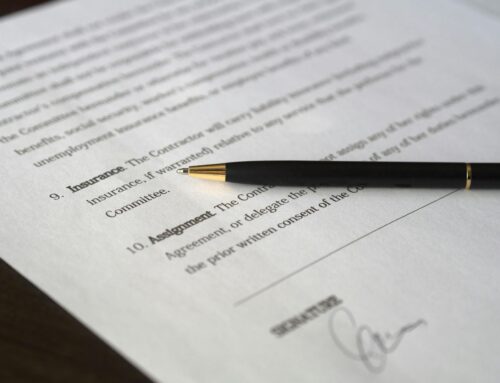When Teslas began to appear on American roads in 2009, it was difficult to predict how prevalent they would be in 2023 with over 1.3 million on the road. Because, in addition to the sheer difficulty of launching a new car company from the ground up, Tesla faced the added challenge of being an all-electric vehicle company in a still gas-dominated country. While Tesla has persevered through these roadblocks, the journey has not been without controversy. Ironically, though, that controversy has had very little to do with being an all-electric vehicle fleet and much more to do with Tesla’s attempt to essentially reinvent the automobile.
Currently, there are four models of Teslas available for sale in the United States: The Model S, the Model 3, the Model X, and the Model Y each with varying price points that correlate to their range, size and luxuriousness. All feature the same spartan interior with the giant in-dash screen, futuristic feel, and flush door handles for better aerodynamics.
The most controversial feature of all Teslas, however, is the advanced driver assistance system which Tesla calls AutoPilot and the add-on Full Self-Driving package. Despite the name, there is no such thing as a fully automated Tesla or other car for that matter. There are no fully automated cars on the roads in the United States and there will not be any anytime soon.
Yet, Tesla has certainly come the closest to offering a higher level of automation in its cars than any other manufacturer so far. According to the autonomy scale put out by the National Highway Transportation Safety Administration (NHTSA) and the Society of Automotive Engineers (SAE), Tesla’s rank at a Level 2 on a scale of zero to five. At Level 2, their cars have more than one automated system involved with the driving such as cruise control, lane-keeping assistance, and lane-centering steering assist, all of which are a huge leap from your grandfather’s cruise control.
This cutting-edge technology is certainly a marvel of engineering but in the wrong hands it has already proven very dangerous. There have been numerous reports of people seen slumped fast asleep in the driver’s seat while their Tesla drives on the highway. Worse still, there have been numerous accidents involving Teslas while the advanced driver assistance system has been engaged. In 2018, there were a rash of accidents with Teslas engaged in autopilot mode hitting emergency vehicles on the side of the road with their lights flashing. From July 2021 to October 2022, there were 474 accidents involving Teslas which constituted three-fourths of total accidents involving autopilot systems. Of those accidents which caused a fatality, 10 out of 11 involved Teslas. In a particularly damning video, a consumer organization filmed a Tesla on autopilot drive through an intersection and hit a dummy posing as a child without braking.
The culminating effect of these accidents and unwanted press led Tesla to issue a voluntary recall of over 360,000 of its vehicles equipped with the misnamed Full Self-Driving system in February 2023. In the recall Tesla disclosed that the system could cause the vehicle to drive straight through an intersection even if the car was in a turn-only lane, could also cause the car to run through a stop sign, could cause it to go through an intersection on a yellow light without caution. Tesla will release a software update to fix this problem in April 2023.
The recall and software update may be too little too late since the legal system is already grappling with the loaded question of liability and fault in the context of accidents caused when the car was in AutoPilot or Full Self-Driving mode. Tesla has taken the stance that the blame lies solely with the operator or driver and not its technology. So far, the criminal justice system in the United States has backed Tesla in this position by failing to indict the company in any criminal proceedings arising out of accidents involving its cars. However, Tesla has been and will continue to be sued in civil proceedings by families of loved ones killed or injured in accidents involving its cars using the autonomous features.
Unfortunately, it is not just the autonomous features of the Teslas that cause problems. There have been numerous reports of Teslas catching fire after accidents rupture their high-voltage batteries. There have even been reports of Teslas spontaneously combusting. These fires are more problematic than combustion gas engine fires since they burn at much higher temperatures – almost 5,000 degrees – and are difficult to put out because they are not fueled by oxygen in the air and do not respond to fire blankets or carbon dioxide. Fire departments around the country are dealing with lack of training on how to put them out safely and effectively given these problems and in some cases, do not even try and just let the fire burn itself out. So far, the most effective method has been pouring gallons and gallons of cold water on them which can be difficult if the crash occurs far from a hydrant or there is limited water.
Tesla’s famed aerodynamic door handles also fall victim to an over-reliance on electronics. If the door electronics malfunction, the door cannot be opened easily either by the occupants of the car or first responders. At least one person died when his Tesla caught fire after an accident and police could not open the door. Even in more mundane settings such as cold weather, the door handles have become frozen meaning and un-openable. While Tesla issued a software update to address the problem, the lack of planning caused a great many people a lot of problems.
All of this is to illustrate that while Tesla’s are blazing new trails in the electronic vehicle market, they are also unwittingly blazing new trails in fatalities involving automated technology, battery fires, and trapping occupants in their cars.
If you are involved in an accident with a Tesla, as an owner, passenger, or third party victim, you need to have the competent and skillful representation of a Los Angeles car accident attorney on your side from the very start.



